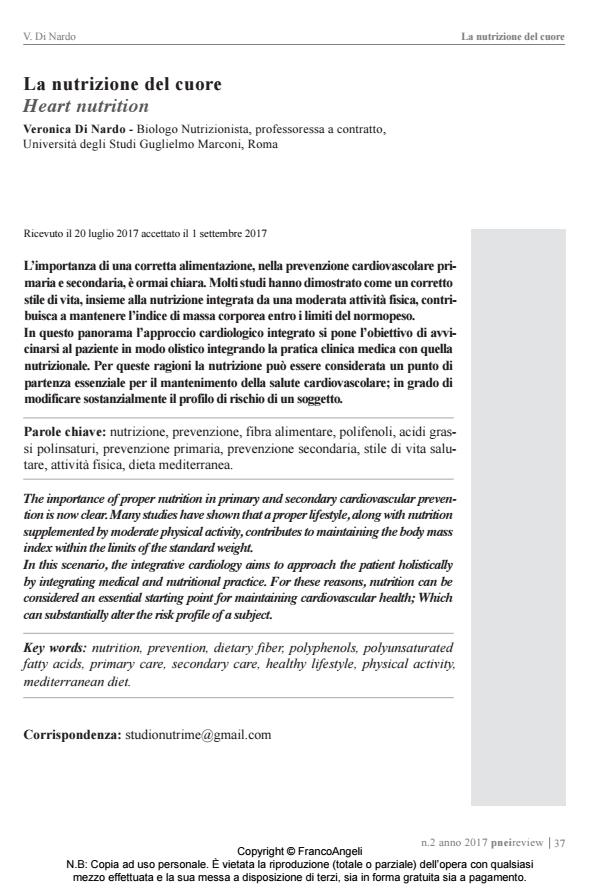Heart nutrition
Journal title PNEI REVIEW
Author/s Veronica Di Nardo
Publishing Year 2017 Issue 2017/2
Language Italian Pages 9 P. 37-45 File size 1095 KB
DOI 10.3280/PNEI2017-002004
DOI is like a bar code for intellectual property: to have more infomation
click here
Below, you can see the article first page
If you want to buy this article in PDF format, you can do it, following the instructions to buy download credits

FrancoAngeli is member of Publishers International Linking Association, Inc (PILA), a not-for-profit association which run the CrossRef service enabling links to and from online scholarly content.
The importance of proper nutrition in primary and secondary cardiovascular prevention is now clear. Many studies have shown that a proper lifestyle, along with nutrition supplemented by moderate physical activity, contributes to maintaining the body mass index within the limits of the standard weight. In this scenario, the integrative cardiology aims to approach the patient holistically by integrating medical and nutritional practice. For these reasons, nutrition can be considered an essential starting point for maintaining cardiovascular health; Which can substantially alter the risk profile of a subject.
Keywords: Nutrition, prevention, dietary fiber, polyphenols, polyunsaturated fatty acids, primary care, secondary care, healthy lifestyle, physical activity, mediterranean diet.
Veronica Di Nardo, La nutrizione del cuore in "PNEI REVIEW" 2/2017, pp 37-45, DOI: 10.3280/PNEI2017-002004